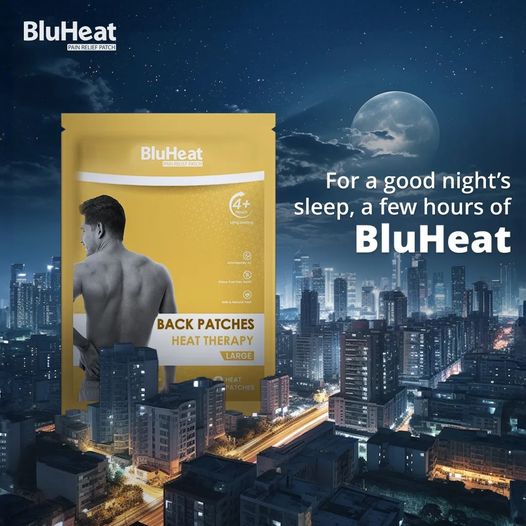Individuals seek relief from a myriad of discomforts as a part of managing pain. The application of heat packs emerges as a compelling and complementary approach. Heat therapy has been a traditional remedy for centuries, celebrated for its simplicity and efficacy. Let us delve into the science behind heat packs as a complementary approach to pain management.
Understanding Heat Therapy
The human body's physiological response to elevated temperatures lies at the core of heat therapy. Blood vessels dilate to enhance blood flow to the region when heat is applied to a specific area. This increased circulation brings vital nutrients and oxygen to the affected tissues. It also promotes healing and reduces muscle stiffness. Moreover, heat therapy can alter the perception of pain signals, providing a soothing and comforting sensation.
The application of heat packs is an age-old technique. This therapy is a type of treatment tool used in physical therapy frequently. It is applied to the affected or injured body region for a specific period. The process helps alleviate pain, inflammation, and stiffness in your body. Remember to regulate the temperature of the heat pack. Once done, wrap the heat pack in a thin towel to avoid damage to the skin.
Heat packs are more beneficial than other treatments and medications for pain management. This is because they are often non-invasive and drug-free. You will also find a very low risk of side effects because it works according to the default healing mechanisms of your body.
Types of Heat Packs
Heat packs come in various forms and cater to different preferences and needs. You will find several types available on the Nysh website. The BluHeat heat packs are known for their safe and natural ingredients, providing around 4+ hours of warmth. Electric heating pads, hot water bottles, and microwavable gel packs are popular choices for most individuals. Moreover, disposable heat patches containing natural ingredients that undergo an exothermic reaction when exposed to air have gained popularity for their portability and ease of use.
- Pain Management and Heat Packs
Management of muscle and joint pain is one of the most common applications of heat packs. The targeted application of heat can provide much-needed relief. It does not matter whether the pain results from a rigorous workout, chronic conditions like arthritis, or the wear and tear of daily life. The heat works to relax muscles, alleviate stiffness, and enhance flexibility. This makes it an invaluable component in the toolkit of those grappling with musculoskeletal discomfort.
- Menstrual Pain and Discomfort
For individuals experiencing menstrual cramps, heat packs offer a non-invasive and drug-free solution. Applied to the lower abdomen, heat helps to relax uterine muscles. It eases the intensity of cramps and provides comfort during a challenging time of the month. This natural approach aligns with the growing preference for holistic methods of managing menstrual symptoms.
- Chronic Pain Conditions
Beyond acute pain, individuals dealing with chronic conditions such as fibromyalgia or lower back pain find solace in the consistent application of heat packs. Unlike medications, heat therapy poses minimal risks of side effects. The process makes it a valuable and accessible option for those seeking sustainable relief from persistent pain.
Maximising the Benefits of Heat Packs
Understanding its application's timing and duration is crucial to optimise heat therapy's benefits. Applying heat too early after an injury may exacerbate inflammation, while waiting too long might miss the window of opportunity for enhanced blood flow. Generally, 15-20 minutes of heat application throughout the day proves effective. It's important to listen to one's body and adjust the duration accordingly.
- Combining Heat with Other Methods
While heat packs shine independently, they can complement other strategies to manage intense pain. Alternating between heat and cold therapy, known as contrast therapy, can be particularly effective for certain conditions. The cold constricts blood vessels, reducing inflammation, while the subsequent heat application promotes blood flow.
- Incorporating Heat into Routines
Integrating heat therapy through heat packs can contribute to its efficacy regularly. Using a heated office chair pad or a bedtime routine with a heat pack can make heat therapy a habit that enhances cumulative benefits.
- Mindful Application of Heat
When using a heat pack, you must pay attention because it is important beyond timing and duration. You must target the source of pain only for optimal results. Ensure that the heat pack covers the intended region. This process helps enhance the therapeutic impact. It does not matter whether you treat a specific joint, muscle group, or area of discomfort.
Safety Considerations for Heat Packs
You should remember the safety considerations associated with heat packs. Such cautiousness will help you avoid any negative impact on your body.
- Temperature Control
Heat therapy is considered safe for all. However, you must be cautious enough to prevent burns or other complications. Try using a towel between the heat source and the skin. Avoid applying heat directly to open wounds or other affected areas. Check the temperature to prevent overheating. Be careful when using electric heat packs.
- Individual Variations
Heat therapy works differently for different individuals. The same applies to heat packs. Hence, start with shorter durations when using heat packs. Adjust the temperatures accordingly to personal comfort levels. You can also consult a healthcare professional for personalised guidance. It is beneficial for those with pre-existing conditions of pain.
Heat Packs: The Best Way to Manage Pain
Heat packs act as a versatile and accessible tool for individuals who seek relief from discomfort. The application of heat offers a natural and non-invasive approach to managing pain. It is often related to muscle soreness and chronic conditions. Harnessing the soothing power of heat packs is a testament to traditional remedies' enduring efficacy in our quest for holistic well-being. Try Bluheat by Nysh to buy your pack of heat packs to ensure warmth and comfort during the cold season.
FAQs
- How does a heat pack complement strategies to manage intense pain?
Heat packs are drug-free and provide a non-invasive method to eliminate discomfort. Physicians or normal individuals use these packs with other approaches to lower the pain.
- Can heat packs improve circulation in individuals?
Yes, a heat pack can improve blood circulation in the affected area. It also helps speed the healing process by delivering the required nutrients to the tissues.
- Are heat packs suitable for managing chronic pain?
The BluHeat packs can be a part of long-term strategies to manage chronic pain. However, their suitability often depends on individual responses and specific conditions.
- For how long does a heat pack provide relief?
A heat pack can provide relief for more than 4+ hours. You can use the BluHeat by Nysh products made from safe and natural ingredients.





